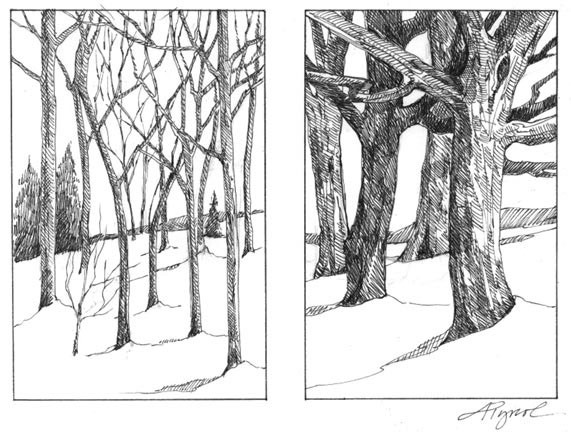
Here’s an important point to make for those of you deeply concerned about climate change: We’re not going to solve the problem by promoting forest growth.
It’s true that trees sequester carbon, a byproduct of our fossil fuel addiction and a leading cause of global warming. It’s also true that during photosynthesis, trees and other plants draw carbon dioxide from the air, mix it with water taken from air or soil, and, in the presence of sunlight, create sugars and other carbohydrates, all of which contain carbon.
If you could throw an enormous plastic bag over a tree and measure the flow of gas in and out of the bag, you undoubtedly would find that the tree was removing carbon dioxide from the atmosphere and storing it in the wood.
This simple botanical truth, however, has led to a larger fiction: that forests could sequester enough carbon to prevent further changes in our climate. They can’t.
What some policymakers suggest by promoting carbon sequestration is that if a much bigger plastic bag were placed over all the forests of the world we would find that the trees and plants were working, collectively, to scrub the atmosphere of excess carbon dioxide. Our forests can never do that; and the reason, in part, is that while some trees and plants bloom and grow, others simultaneously die and rot, releasing carbon back into the atmosphere. It’s a closed loop.
Although there are times when certain forestlands do accumulate more carbon than they release – such as when they are fast growing on once-cutover land or when they are very old, living on thick, carbon-accumulating soils – the net global balance from wooded land over time is essentially zero.
Deforestation is another story altogether. The Intergovernmental Panel on Climate Change, established by the United Nations, has estimated that deforestation is currently responsible for 20 percent of our annual carbon dioxide emissions. When forests are turned into farm fields, housing sites and parking lots, these carbon dioxide emissions increase. So keeping existing forests intact will certainly help curb future emissions.
But even if we stopped the loss of forestland, this wouldn’t reverse the burgeoning atmospheric carbon levels. And that’s because the other 80 percent of our carbon dioxide emissions come from burning fossil fuels, such as oil, gas and coal, which are the byproducts of the decomposition of trees and other plants that grew hundreds of millions of years ago. No matter how cleverly we manage our forests, no matter how many trees we plant, we can’t compensate for the carbon dioxide and other pollutants released from these fuels.
“But”, you might ask, “Isn’t managing our forests still important?”
Absolutely. But managing forests for maximum carbon storage also would mean not managing them – or at least not managing them as much – for other things our modern society enjoys.
Here in the Northeast, we presently manage our forests for many reasons – to use them as wilderness and aesthetic sanctuaries; to harvest them for timber, firewood and pulpwood; to use them for recreation, crisscrossing them with trails and roads; and to use them as refuges for wildlife and biodiversity.
This last point is perhaps the most critical: A full range of plants and animals requires a full range of forest types, from the very old to the very young and from the vast expanse to the tiny plot. If we settle on just one type of forest – the one that ends up storing the most carbon over the short term – we’ll be inevitably compromising on the rest.
“Plant a Tree – Save the Earth” is a catchy slogan that has validity only if you accept that your tree for a while will suck up the carbon given off when another tree is cut. It’s a feel-good exercise. You won’t be compensating for the carbon emitted as you drive to work or fly off on vacation.
This not to suggest we ignore the message of Arbor Day. Trees bring shade, quiet beauty, lumber, firewood, birds’ nests and raccoon hideouts. In the grand scheme of things, that ought to be enough.


Discussion *